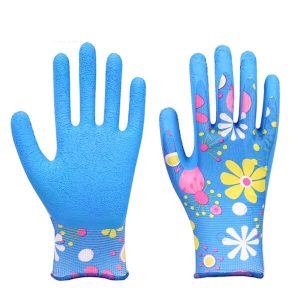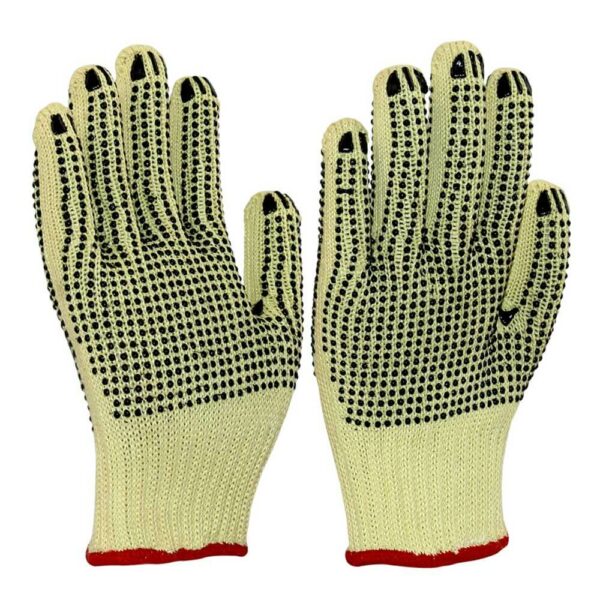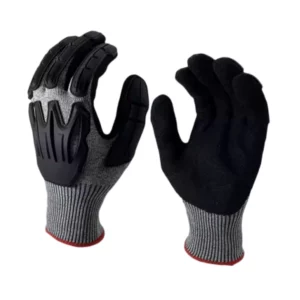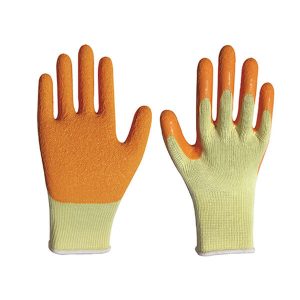The common cut-resistant gloves on the market are divided into stainless steel gloves, HPPE gloves, steel gloves, Kevlar gloves, and other cut-proof gloves. The life of a pair of cut-off gloves is equivalent to 500 pairs of ordinary line gloves, which is extraordinary. Cut resistance and wear resistance.
The common types of cut-resistant gloves:
1. Stainless steel gloves
Stainless steel gloves are made up of tiny stainless steel rings that are linked together. It is characterized by the highest level of cut protection and is resistant to some of the higher cutting forces, but the disadvantages are that it is too heavy and expensive.
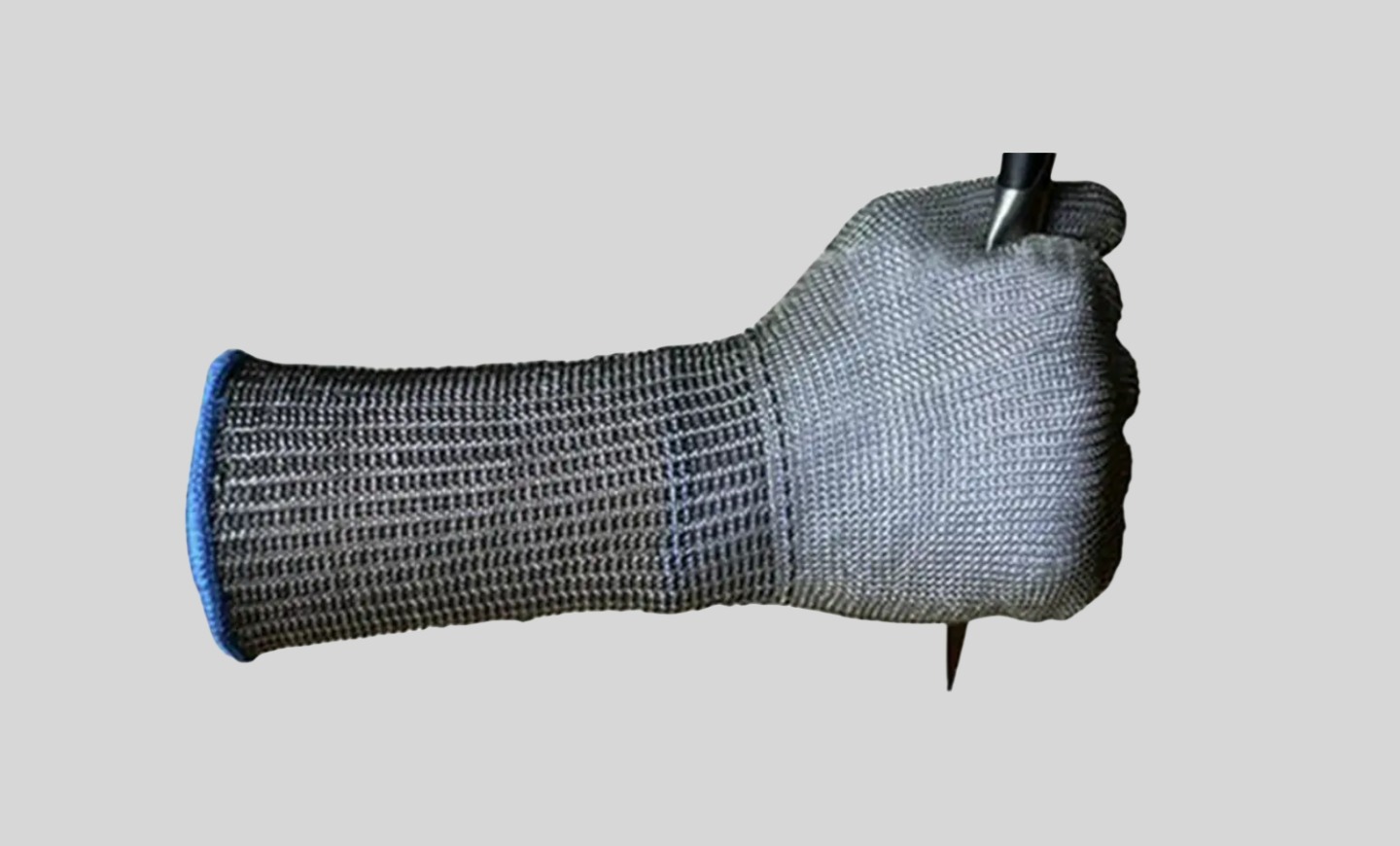
2. HPPE gloves
The cut-proof rating of HPPE gloves is different. Usually, these gloves have three levels and five levels. In the fifth grade, the glass fibre is usually added to the glove to achieve cut-resistant gloves level 5. The HPPE material also can be used as kitchen cut-resistant gloves. HPPE gloves palm immersion PU glue gloves are more common. HPPE cut-resistant gloves are the most popular in the world now. Also for the best cut-resistant gloves for our manufacturer. Level 5 cut-resistant gloves, Level 4 cut-resistant gloves, and Level 3 cut-resistant gloves are suitable for most work needs.
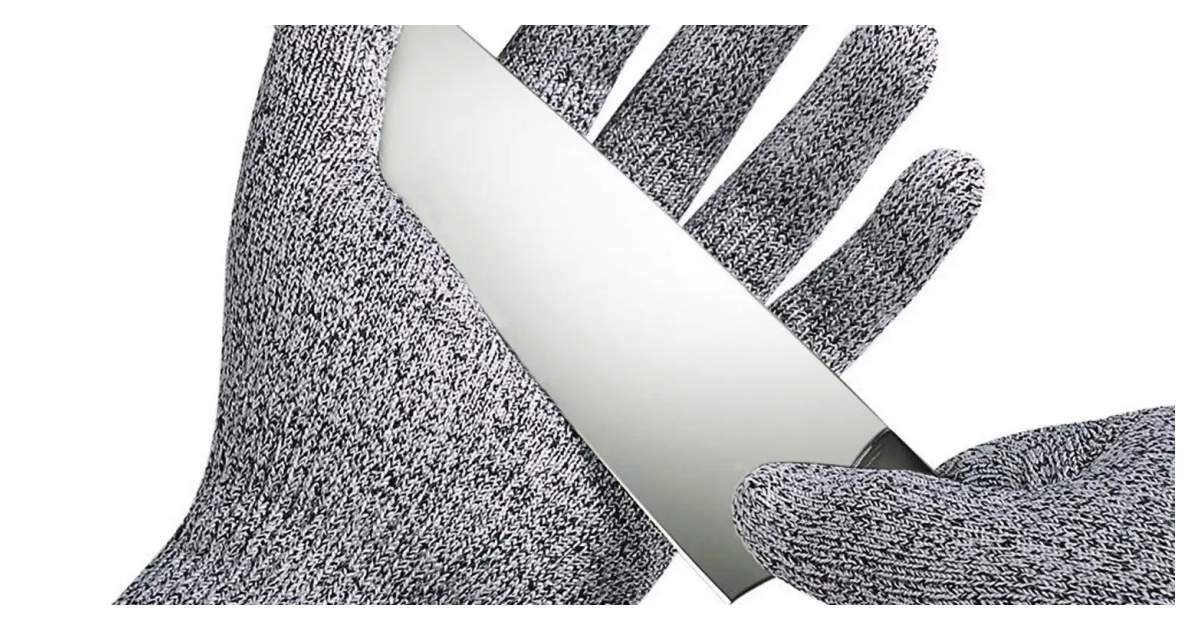
3. Wire gloves
The main function of the wire gloves is the small wire composition contained in them. It is usually made into a covered yarn and then woven into a glove. This glove is hard.
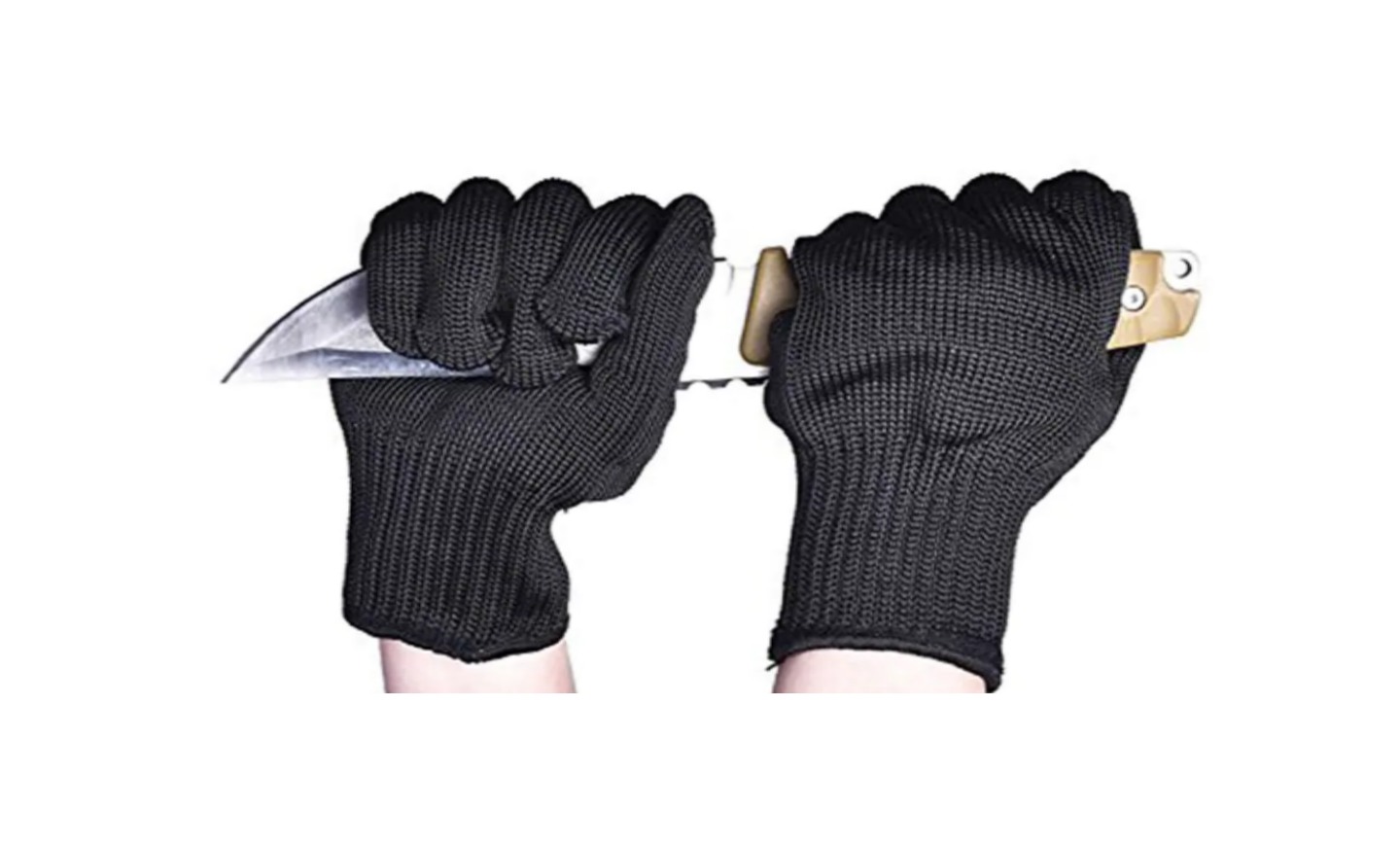
4. Kevlar gloves
Kevlar gloves are manufactured by the United States DuPont company’s patented technology Kevlar cotton woven protective gloves. They are woven into protective gloves. Yellow is common and each glove carries the Kevlar trademark. This glove is not only cut-proof but also heat-insulating, but it is easy to change colour in the air. Kevlar gloves are further processed into a palm cover, with a tiger’s mouth reinforced or palm dipped. They all extend the life of the glove. High strength and lightweight. The equivalent weight of KEVLAR is 5 times that of steel wire. KEVLAR provides excellent cut resistance without compromising hand flexibility while being lightweight and comfortable to wear. KEVLAR cut resistance gloves cut level is minimally affected by washing.
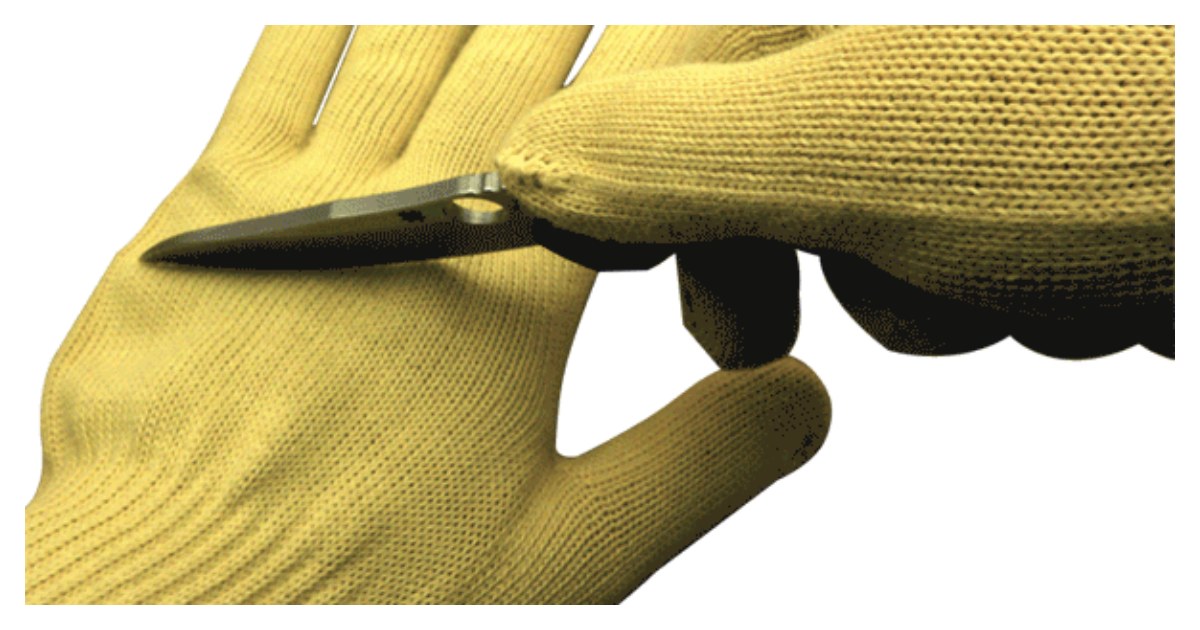
Which gloves have the best resistance to cutting?
Stainless steel gloves, wire gloves and kevlar gloves have good anti-cutting performance. Stainless steel gloves and wire gloves provide the highest level of hand protection, but they are also relatively heavy and are not suitable for prolonged wear. Kevlar gloves have a better cut and heat insulation performance and are more portable, but the price is higher.
In the choice of anti-cutting gloves, according to the actual needs and use of the environment to choose. In anti-cutting effect, stainless steel gloves, steel gloves and Kevlar gloves have good anti-cutting performance but need to pay attention to their weight, comfort and price factors.
Where are anti-cutting gloves generally used?
The following are some common use occasions:
- Industrial manufacturing: In metalworking, glassworking, machine building and other industries, operators need to work with sharp metal edges, tools and mechanical parts, anti-cutting gloves can effectively reduce the risk of cuts.
- Food processing: Anti-cutting gloves provide additional protection during food cutting and processing, reducing the possibility of accidental injury and accidents.
- Medical field: Medical personnel need to touch sharp instruments during surgery and operation, and anti-cutting gloves can reduce the risk of hand injury.
- Building maintenance: Anti-cutting gloves protect your hands from sharp building materials and tools during building construction and repair work.
- Taxi driver: Anti-cutting gloves can be used to subdue gangsters in emergencies, taking the sword by surprise and empty-handed, which can both protect itself and subdue gangsters.
In general, as long as it is necessary to protect the hand from injury, you can use anti-cutting gloves. When selecting and using anti-cutting gloves, select them according to the actual requirements and the use environment to ensure the safety of your hands.
If you want to find other anti-cut gloves suppliers, please read Cut Resistant Gloves Suppliers Manufacturers.

